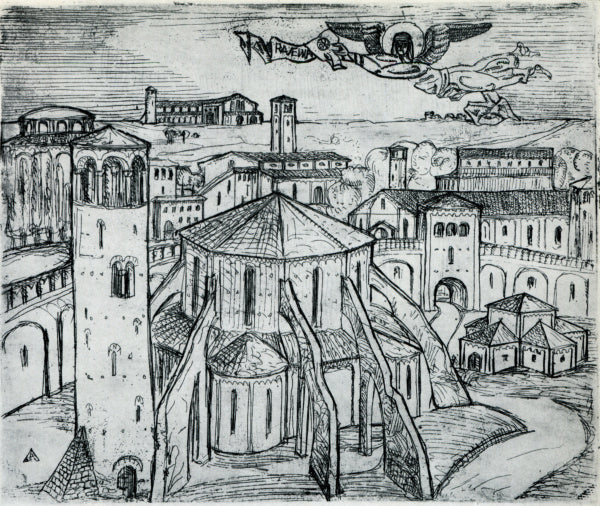Description
In the vast panorama of the art of the twentieth century, the figure of El Lissitzky stands out as one of the most innovative and avant -garde. His work "Reminiscence of Ravenna" of 1914 is a clear testimony of his ability to synthesize influences and create something unique. This painting, which dates from a formative stage in the artist's career, encloses multiple layers of meaning and technique that reflect both their personal search and their response to the artistic currents of the time.
The Lissitzky, born in 1890 in the Imperial Russia, began its artistic career in an environment of cultural and political effervescence. He studied in various European cities, absorbing influences that he would later merger in his distinctive style. His "Ravenian reminiscence" seems to be a turning point where reminiscences of the past and indications of future innovation converge. The title of the work suggests a connection with the city of Ravena, famous for its Byzantine mosaics. This reference is not fortuitous; It can be interpreted as a reflection on art history and meditation on how the old and the modern can coexist in a work of art.
The "reminiscence of Ravena" composition is intriguing and multifaceted. In painting, two human figures emerge in an almost dreamlike atmosphere. One of these figures, darker and more robust, holds something in the hand that could be interpreted as an object of power or arcane symbol. The other lighter and more ethereal figure seems to be in a state of contemplation or silent dialogue with the first. Both figures are surrounded by a series of geometric shapes and strokes that resemble a network or framework, perhaps suggesting an invisible connection or an underlying structure that unites them. This interrelation of human and abstract elements reflects the ability of the Lissitzky to play with the duality and interaction between the concrete and the abstract.
The use of color in this work is another notable aspect. Dark and land tones are intertwined with touches of blue and black, creating a contrast that highlights the central figures even more. This palette not only gives depth and texture to the work, but also evokes a feeling of mystery and introspection. The choice of colors seems to want to connect subtle with the tradition of Byzantine icons, while anticipating the modernist sensitivity that Lissitzky would develop in its later years.
You cannot place "Reminiscence of Ravenna" without considering the broader context of the artistic and cultural movement of its time. The Lissitzky was a key figure in suprematism and constructivism, movements that sought to reimagine the function of art in society, moving away from mere representation to embrace pure expression and practical utility. Although this work predicts those movements, you can see the flashes of its future direction. The attention to the forms, structure and symbolism are all indications of the transition that Lissitzky would make towards a more radical and abstract artistic language.
In conclusion, "Ravenian reminiscence" is a work that encapsulates the essence of the young Lissitzky, an artist in full discovery of his voice and preparing the land for his most revolutionary contributions. The painting not only offers a look at Lissitzky's early interests and experiments, but also invites the viewer to reflect on the connection between the past and future, tradition and innovation. By admiring this piece, one not only sees a work of art, but also a moment in the evolution of a creative mind that shaped the course of modern art.
KUADROS ©, a famous paint on your wall.
Hand-made oil painting reproductions, with the quality of professional artists and the distinctive seal of KUADROS ©.
Art reproduction service with satisfaction guarantee. If you are not completely satisfied with the replica of your painting, we refund your money 100%.

